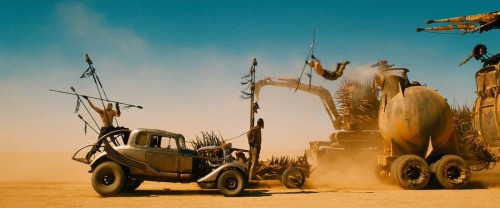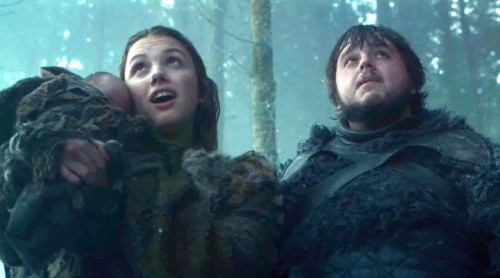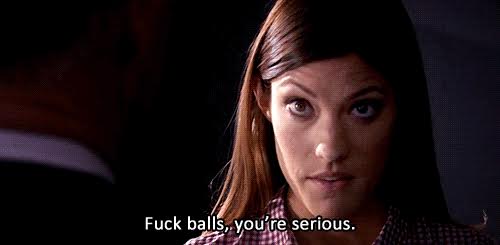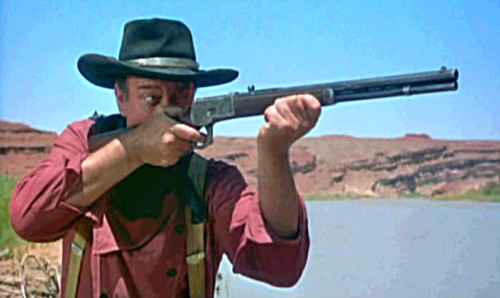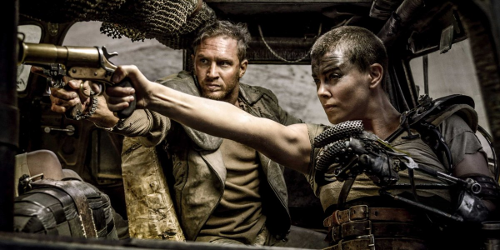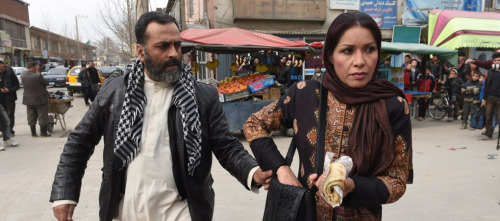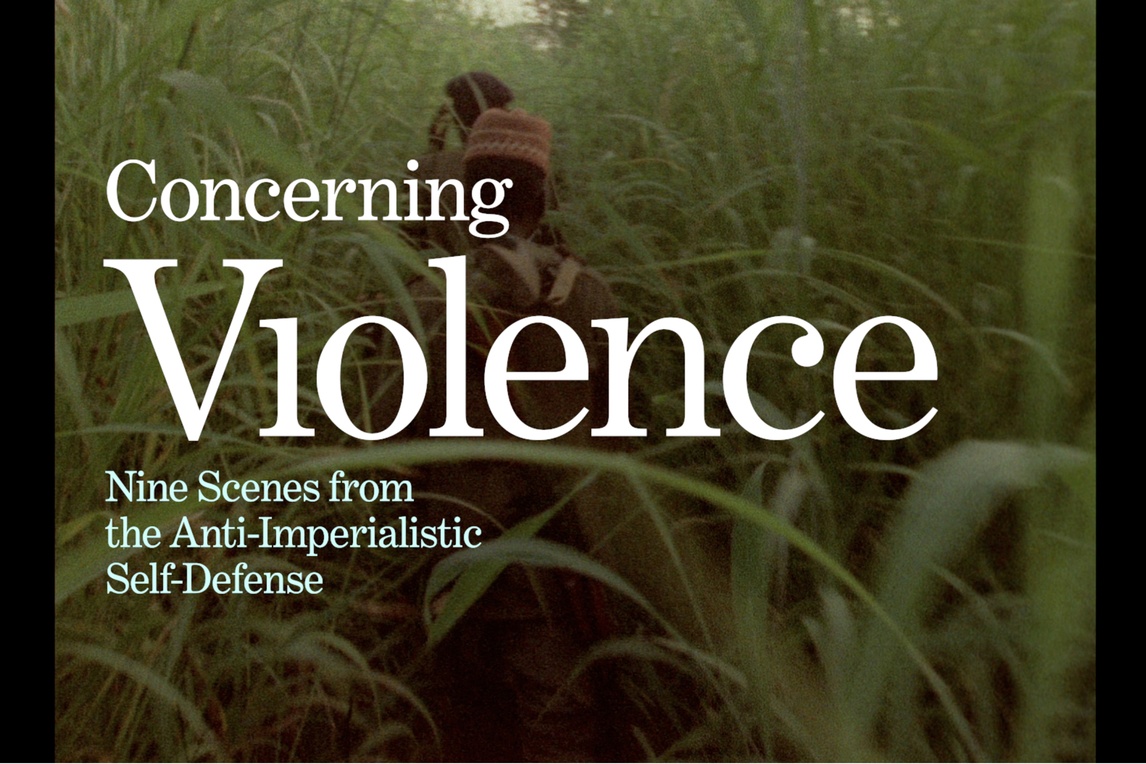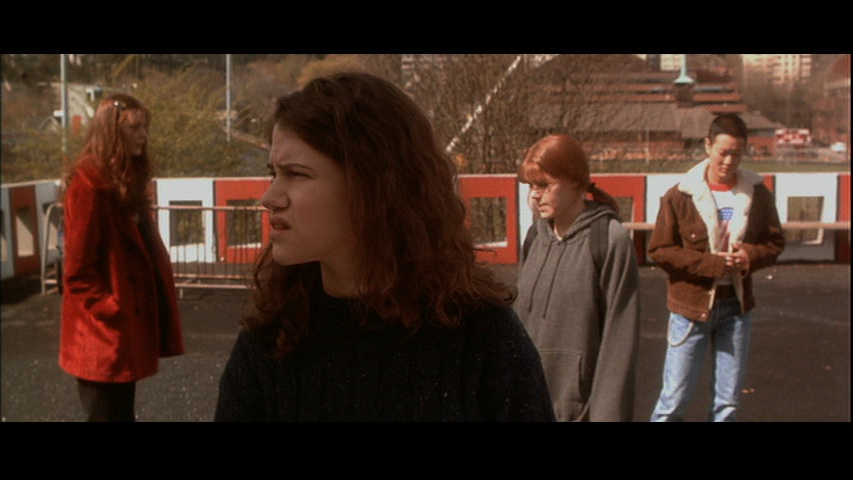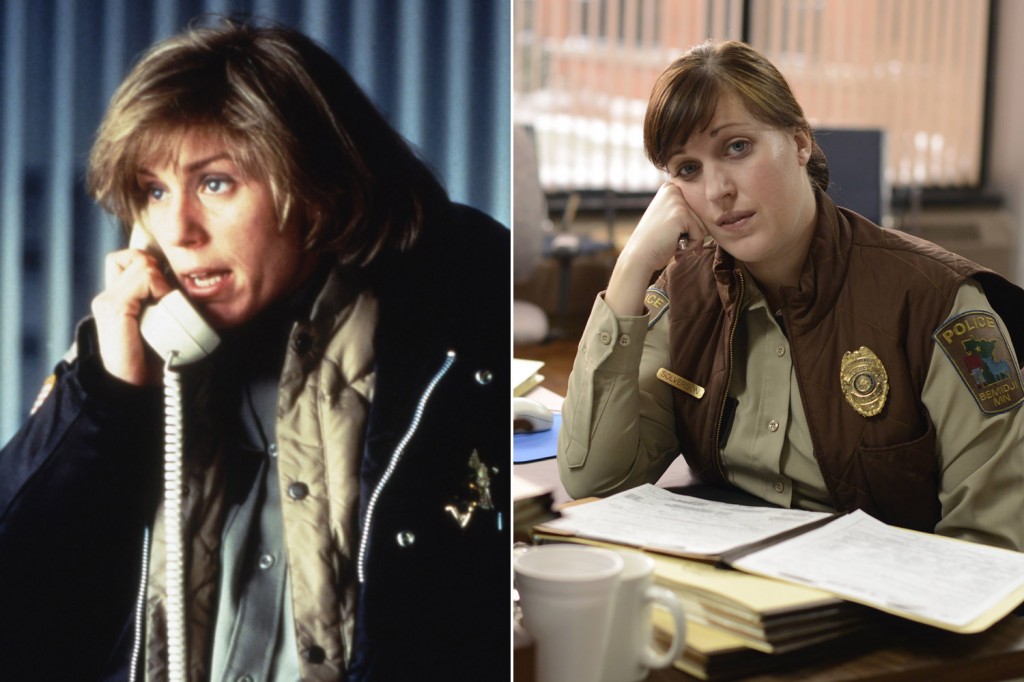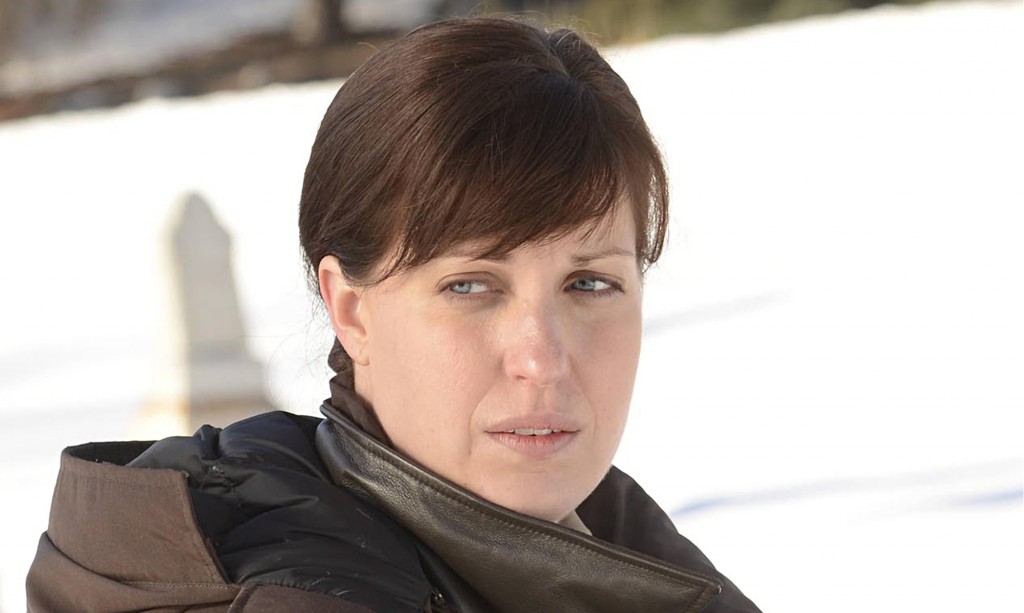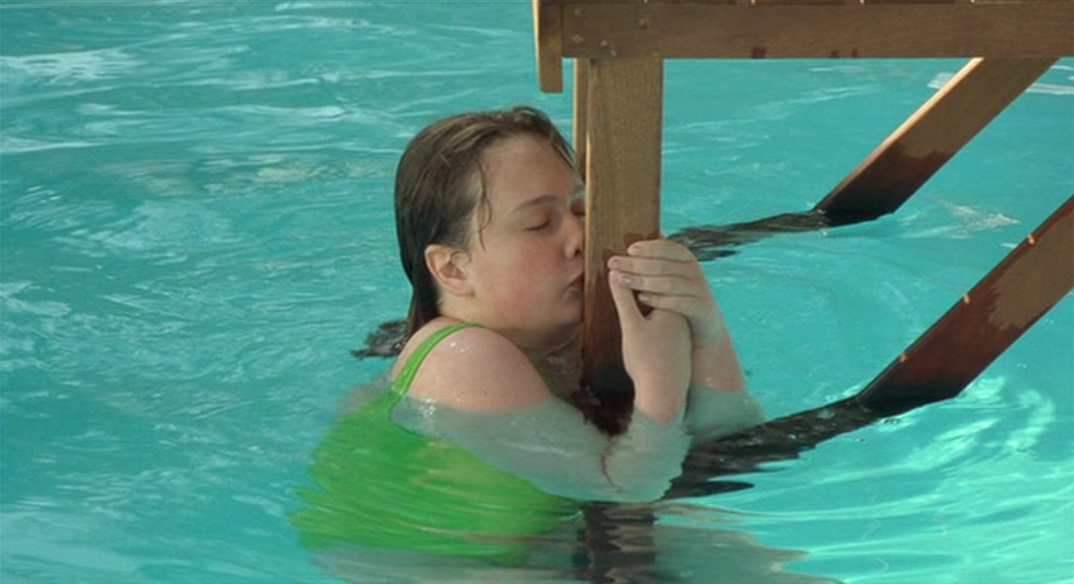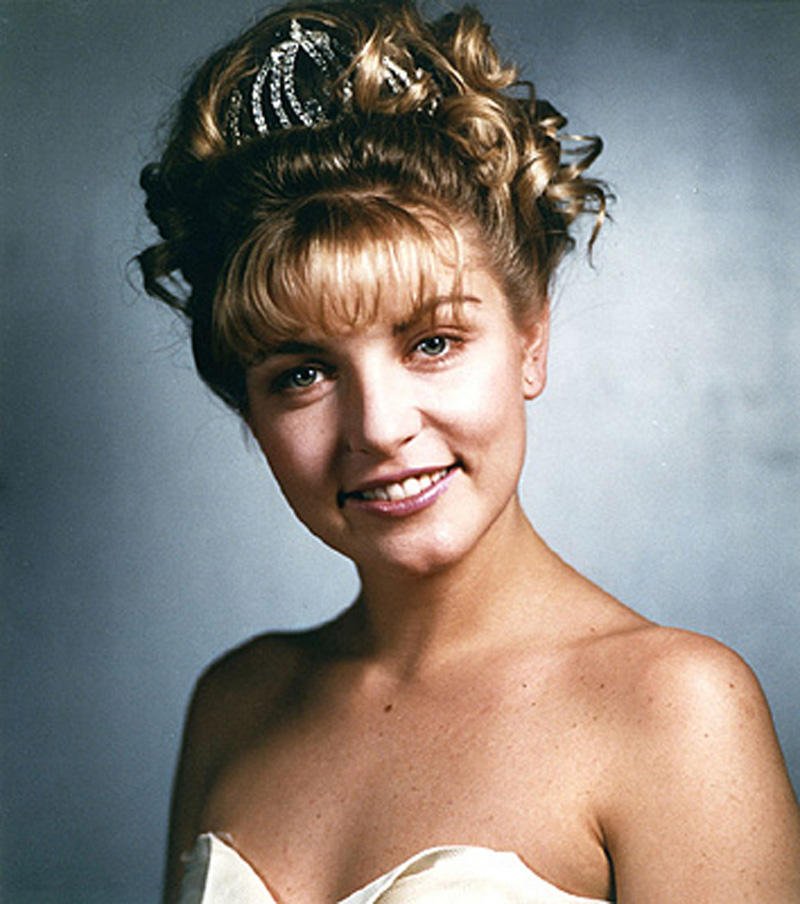
More often than not, the victim of violent crime in film and TV is a woman. With your average procedural, take for instance, Law and Order: SVU, almost every episode features a woman who has been raped or one who has been raped and murdered. In real life, women are disproportionately the victims of violent crimes and these stories increase awareness of the physical and psychological aftermath faced by these women, their friends and family, and society.
However, by positioning a narrative to begin with the victim already dead and voiceless, she is only that, a victim in the story, never allowed to become a person. This structure also creates distance, so the viewer is less likely to identify with the dead girl and feel true fear and sympathy for experiences.
The exploitation of the her person and body is also seen as evidence of sexism in the crime narrative. As in horror movies where the murders of women are more graphic and garner more screen time then those of men, the dead girl usually suffers extreme sexual violence and disfigurement, which are shot it graphic, loving detail. The crime scene or crime scene photographs are frequently shown and her suffering is discussed at length in near fetishistic tones.

Twin Peaks begins with the discovery of Laura, dead and wrapped in plastic
There is an appeal to the public imagination in the image of a beautiful young woman in peril, particularly a young, white women known to be popular among her peers and viewed as sweetly, saintly, and virginal. The much-loved cult TV show, Twin Peaks, originally centered around the investigation of the murder of beautiful, blue-eyed blonde Laura Palmer (Sheryl Lee) and promotion for the series depended on viewers’ investment in the mystery of “Who Killed Laura Palmer?” When The Killing premiered in 2011, its advertisements asking, “Who Killed Rosie Larsen?” were clearly influenced by Twin Peaks.
Along with the evocative question, the series was known for two iconic images of Laura, the dead girl, that stand in for the show in popular imagination: the homecoming portrait, which shows her rosy cheeked and smiling, and her dead body, fished out of the water wrapped in plastic, shades of gray and blue. The central importance of the portrait, which hangs at Laura’s high school as well as her family home, was inspired for the 1944 Otto Preminger film, Laura, where a detective fixates on the portrait of a glamorous murdered ad-exec and falls in love with her through it (luckily, it’s a case of mistaken identity and Laura’s not really dead).
Viewers so latched onto the idea of Laura Palmer, that actress Sheryl Lee, originally brought on to appear in a few scenes in the pilot, made reoccurring appearances in flashbacks as Laura and regular appearances as Laura’s look-a-like cousin Maddie Ferguson, as well as starring in the prequel film after the series ended.
In early episodes of the show, it’s suggested that lead investigator FBI Agent Dale Cooper (Kyle MacLachlan) has romantic feelings towards her and has a dream/prophetic vision of a seductive Laura, sitting with him in a mysterious red room. At the end of the dream, she whispers in his ear the identity of her killer. Though Cooper forgets what she said upon waking, his eventual memory of her words gives him certainty of her murderer’s identity. A victim of incestuous rape, abuse, and murder at the hands of her father, Leland (with an ancient demonic spirit, BOB, inside him–or something), Laura is allowed the satisfying and cathartic opportunity to name her killer and help to catch him.
In the fantasy of the series, this room is described as a sort of way-station to the afterlife, a refuge between good and evil and a part of the dangerous realm of pure evil, the Black Lodge, that holds onto human souls while demons walk the earth in their bodies, so Cooper’s dream is not in fact a dream, but Laura’s first opportunity to speak for herself. Before her death, she wrote in her secret diary (different from her regular diary) about her dream of this same encounter with Cooper.
After her death, the dead girl’s reputation is often changed according to the flawed Madonna/whore dichotomy and her neighbors, family, and peers come to realize she was not the person they thought she was. In procedurals, boyfriends learn their girlfriends had other lovers, and parents learn their daughters had sex lives. Though it’s rare, sometimes there’s the opposite revelation, as the boyfriend who murdered his girlfriend for cheating learns she was always faithful.
When Laura’s body is found in the series, most people in town know her only as the Homecoming Queen, a model for the perfect American teenage girl. Early on, she shows up in flashbacks and home videos, kidding around with her best friend and smiling lovingly at her boyfriend (himself introduced as the perfect American teenage boy). However, as her murder is investigated, the people of Twin Peaks come to see a darker side of Laura, mired in sex, drugs and a heretofore unknown seedy underbelly of their picturesque little town. As Laura is no longer around, and the abuse she had suffered are originally unknown, her reputation is tarnished in the eyes of many townsfolk and she is unable to give any sort of explanation to the people who would condemn her.

Sheryl Lee also played Laura’s cousin Maddie, who meets a similar fate
The duality of Laura is suggested through the character of dark-haired identical cousin Maddie Ferguson. Maddie is everything Laura was not–innocent, naive and close to her family. While Laura is glamorous and sexual, making coy recordings for her therapist and advertising herself in adult magazines, Maddie is mousy and eager to please. Becoming more like Laura (by ditching her glasses and taking more control of her sexuality) gets Maddie killed as Leland mistakes Maddie for Laura.
Though there are other readings of the duality of Sheryl Lee’s two characters, it is easy to see them as Madonna and whore. Unusually for the trope of identical cousins, where the blonde is commonly presented as good and the brunette as bad, Twin Peaks suggests Maddie is the embodiment of goodness and purity. By contrast, Laura, a victim of rape and abuse, has one foot in darkness and is revealed to have had sex or sexualized dynamics with almost everyone she interacted with.
In addition, Laura questions her own goodness and independently seeks out a therapist to help cope. In her last week alive, she quits her position heading up the Twin Peaks Meals-on-Wheels program, suggesting she has given up on trying to help others. In the prequel movie, Twin Peaks: Fire Walk With Me , it is clear she feels unworthy of salvation, as she tells Donna she believes the angels have abandoned her and she will burn forever. Later on, she watches as angels disappear from a painting in front of her.
This storyline, though suggestive of the self-loathing felt by abuse victims, makes the unfortunate implication that the abuse Laura has suffered has made her a bad person, or at least lesser than Maddie.

Laura realizes she is not a bad person when an angel appears to her in the red room after her death
The film allows Laura to emerge on the other side, in the Black Lodge’s mysterious red room, to see her own angel waiting for her. It ends with her smiling and laughing, assured that being abused did not “corrupt” her or make her undeserving of love, a great relief after watching her suffering throughout the TV series and film.
Focusing on the last week of Laura’s life with her as the main character, Fire Walk With Me has dark undertones of hagiography, the story of the life of a saint, as it revels in her suffering, allowing it to elevate her and cast her as a hero for enduring. It also gives her a chance to speak and show viewers who she was in her private moments, reconciling the two opposing views of her as both a saintly meals-on-wheels volunteer and cocaine-addicted prostitute into a complete person.
Perhaps what endears viewers to the dead girl as a character is our culture’s glorification of female victims, specifically for being tragic and fragile. In an essay at Rookie, Sady Doyle writes, “We love Laura Palmer, wrapped in plastic and bright blue, tortured and murdered just as surely as good St. Dymphna.” Accordingly, many dramatic teenage girls look to women like Sylvia Plath and Marilyn Monroe as heroes, not for their achievements but for the glamor and depths they see as going along with pain.
However, the film can also be criticized for its unflinching portrayal of the graphic violence visited on Laura and her friend Ronette Pulaski. They are shown tied up, screaming and bleeding, while they are brutalized for extended sequences. At one point, Laura is forced to look at her face in a mirror while she is raped, suggesting her abuser wants to make it impossible for her to pretend to be anywhere else or that this is not happening to her.

In her last moments, Laura is forced to watch her own abuse
There are a lot of reasons fans of the series disliked Fire Walk With Me; most wanted more time with the kooky inhabitants of Twin Peaks and missed its quirky moments. The film is much darker and more violent then the series and almost entirely lacking in comedy. Though it has David Lynch’s trademark surreal touches, the story at its heart is also much more real. The film forces viewers to try to understand the horror Laura has gone through as a victim of incest and abuse, how the Palmer house has become her own private hell and she has watched her death draw nearer, sure it would come for her soon. With this in mind, the film is harrowing and difficult to watch, but its existence is integral to the understanding of Laura’s character as a developed character and complex human being. The release of a book, The Secret Diary of Laura Palmer, intended to be the character’s diary discovered on the show, has a similar effect. It was a best seller, particularly remembered among people who were teenage girls at the time of its release.

Fire Walk with Me is often hard to watch due to Laura’s suffering at the hands of her father
The dead girl continues to be popular figure in crime narratives, though some more recent examples have tried to give her a voice in interesting ways. In the TV procedural Cold Case, the murdered character in each episode was shown in flashbacks throughout the episode, following him/her right until the moment of the murder. However, these flashbacks, and those on several other procedurals with similar narrative styles, are the memories of living characters, filtered through their perception of the events, rather than the way things were experienced by the victim. At the end of each Cold Case episode, the dead character’s ghost appears to watch their loved ones, allowing them a slight voice in the narrative, as if set free by the discovery of the killer.
The dead girl’s ghost hovering around postmortem and giving advice on the investigation is a storyline that’s been used on almost every fantasy series, from Buffy to Charmed. Unlike these stories, where the existence of something supernatural is undisputed, crime narratives often use the ghostly figure of the dead girl to suggest the inner workings of the protagonist’s mind. In the first season of Veronica Mars, the titular character’s (Kristen Bell) murdered best friend, Lilly Kane (Amanda Seyfried), often appears to her. Like Laura Palmer, Lilly managed to become one of show’s most beloved and enigmatic characters with minimal screen time.

Lilly appears to Veronica in the clothes she was wearing when she died, still bleeding from her head wound
Lilly appears to Veronica to comment on how much she has changed since Lilly’s death, becoming tougher and wiser and to give cryptic hints. In one scene, Veronica sees her out of the corner of her eye, running around the Kane house and leading Veronica to the scene of the crime.
She appears in several flashbacks and at the end of many episodes, in Veronica’s imagining of the murder taking place as she entertains new suspects.
Her appearance is also used as a reward for Veronica after she finally solves Lilly’s murder at the end of the season, when she imagines herself in paradise, lying in a pool full of flowers with Lilly. Lilly’s final appearance is in Veronica’s dream at the end of season 2, as the marker of what Veronica’s life could have been like if she wasn’t murdered. The scene doesn’t successfully give Lilly as voice as it focuses on how Veronica would have been different, not on the tragedy of what Lilly would have been able to experience if she had lived and will now never be able to.

Veronica imagines Lilly set free by the arrest of her killer, allowed to relax in paradise
The posthumous narrator is a rare and interesting devices, used most memorably in American Beauty and Sunset Boulevard, where murdered characters look back on their lives. As it’s already a rare concept, a posthumous female narrator is even more rare. A notable example, The Lovely Bones, focuses on Susie Salmon (Saoirse Ronan)’s family trying to rebuild after her death, rather than the search for her killer. Her murderer is not caught, either with her ghostly help or without, but is punished only by his own accidental death.
The dead girl is an interesting figure in the landscape of crime fiction–one who can easily become a victim or a caricature. Experiments with flashbacks, fantasy, dreamworlds, and narration are intriguing ways to give her a voice and return some humanity to her and the real life victims she mirrors.
See also on Bitch Flicks:
Hannibal’s Feminist Take on Horror Still Has a High Female Body Count
A Review in Conversation of Twin Peaks
Elizabeth Kiy is a Canadian writer and freelance journalist living in Toronto, Ontario. She recently graduated from Carleton University where she majored in journalism and minored in film.
